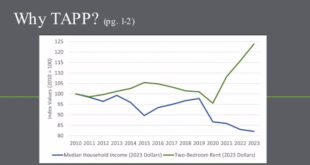Reservoir storage in relatively good shape from 2024
By Katherine Nettles
A dry January and relatively warm, dry start to February has taken a toll on the snowpack across the Gunnison Valley, and despite snow in the forecast for the weekend ahead, that is not expected to change much in the coming weeks. In a report on February 11 to Gunnison County commissioners, Upper Gunnison River Water Conservancy District representatives confirmed that conditions in the Upper Gunnison Basin and also across most of western Colorado have suffered from the lack of significant precipitation in 2025.
“Unfortunately, after a long period of time with no drought conditions, we are now moving into abnormally dry conditions,” said UGRWCD senior water specialist Beverly Richards.
The state drought monitor shows that 64% of the basin is now abnormally dry, and there has been widespread snowpack and drought condition degradation.
“The whole state moved from 77% experiencing no drought conditions as of December 10 to 55%. So, it is happening throughout the state,” said Richards.
Precipitation has ranged from 0 to 50% of normal in the basin for the past 30 days, and several storm systems predicted to move through the area have been downgraded and/or ended up further north.
“There has been some improvement to the north, but for the most part things are drying out,” said Richards.
Currently the Gunnison Basin is at 92% of the median for precipitation for water year 2025, which began in October and started the month of February at 95%. “We’re going down pretty much every day,” said Richards of those data points.
Snow water equivalent (SWE) for the water year is at 90% of the median. Richards said so far, soil moisture is doing well, but as precipitation goes down and temperatures go up soil moisture begins to evaporate.
Snow telemetry (SNOTEL) sites in the upper basin show that for the most part snowpack and SWE are a bit below the median amount for the year. The Porphyry Creek site at a lower elevation of less than 11,000 feet has been above at 123% but higher elevations such as Schofield are lower than the median.
“That shows that snow at higher elevations is not what it should be,” Richards said.
There were five cloud-seeded storm events in December and two in January, reported Richards. “There hasn’t been much for them to seed.”
The district has conducted 207 manual cloud seeding generator hours this year, 163 of which were in December, and 62 remote generator hours between the two remote generators in the basin, 58 of which were in December. There were just four remote generator hours in January. There was 6.2 inches of SWE accumulation during those seeded events, said Richards.
Reservoir storage for the entire Gunnison Basin is at 60% of average, and the Colorado River Basin models are forecasting that Taylor Reservoir and Blue Mesa Reservoir will fill to just about 90% of normal, and that runoff volume will also be about 90% of average.
“So, it might be a little bit lower this year than what we’ve seen in the past couple of years,” concluded Richards.
Long range forecasters are predicting warmer temperatures and below average precipitation for the next three months going into April, although as UGRWCD general manager Sonja Chavez noted, it is still very early to predict the spring flows.
“February is still so early, and it’s kind of hard to say. We realize so much in those March/April and early May spring flows, but if it stays dry, we ended the year with a relatively good amount of reservoir storage so that’s a good thing,” said Chavez. “If we don’t get some more precipitation in March or April it could be a tough year.”
Chavez said the next update in April will be clearer. Meanwhile airborne snow flights will start in April and early May across the basin, which are used to more accurately assess the snowpack and predict spring runoffs.
 The Crested Butte News Serving the Gunnison Valley since 1999
The Crested Butte News Serving the Gunnison Valley since 1999



